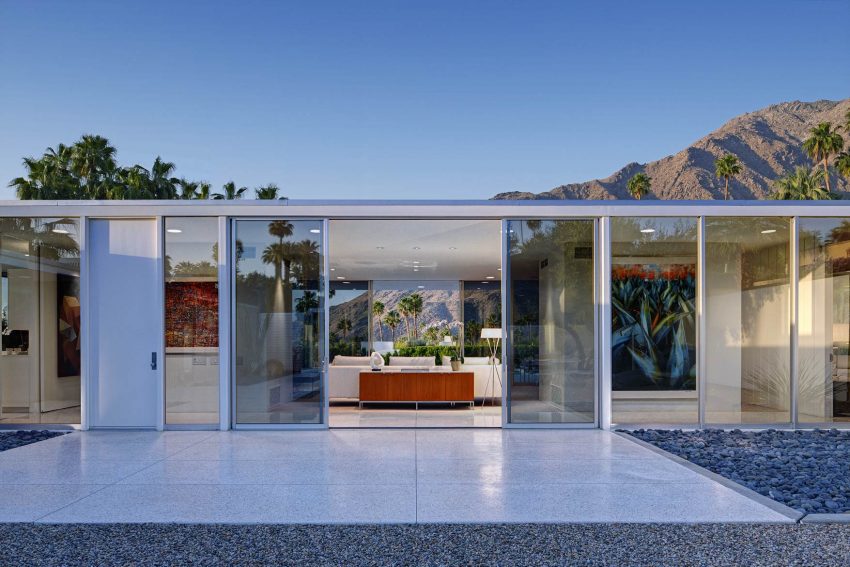In the history of Palm Springs architects there has often been an unseen contradiction between what the architect wants to design and what the client wants built. Sometimes an architect will get so wrapped up in his vision and personal aesthetic values that what the client likes and does not like becomes secondary, or is overlooked completely. When this happens the house or building created may win design awards and look beautiful to a trained architectural eye, but the client or people who have to live in it may dislike it intensely.
Often the owners or tenants will go back in and change things a second or third time to better suit their aesthetics or purpose.At the root of this problem is the very nature of architecture, to create. An architect is very passionate about the creative artistic aspects of his work. He wants to create something new and different and put himself and his vision into his work.
Often, however, the growth and development of an architect involves the painful realization that their unique vision does not usually count for very much. The client, after all, is paying for it and has to live with the house or building long after the architect has finished and gone on to other projects. The architect is there to serve the client and not the other way around.
The other professions rarely have this problem. Doctors and lawyers are almost always acknowledged to be the decision makers and authorities in their respective fields. Science and the written law are established and much less subject to interpretation compared to artistic values and visions.
Unfortunately, the established architectural community and schools have more often than not made the problem worse. Architects are never made famous because of how well they satisfy their clients. They are famous because of the unique, creative style or image that they have managed to present to the world.
Architectural awards are given to designs or buildings that are creative and almost never to buildings that perform their function flawlessly or totally satisfy their clients. In many cases, world famous architects have never had the opportunity to build more than a small handful of buildings because of this contradiction between client needs and the architect’s creative vision.
If you do approach a world famous architect with a project, it is pretty much assumed that you as a client are buying into that architect’s creative vision 100 percent. You as a client become an extension of the architect’s vision and not vice versa. Of course, the client has generally had ample opportunities to review the famous architect’s body of work before hand because of the exposure the architect has gotten in the media.
You like his work and aesthetic values and hire him, or you don’t. Of course there are architectural firms that are almost the opposite. They are highly client oriented rather than design oriented. They often become financially successful from client loyalty and referrals but rarely get media attention or become famous because of the conservative nature of their work and business.
Ultimately the best solution for most established architects is to balance the two extremes and become a teacher for the client. The architect presents the client with various design and style options and the pros and cons of each and listens carefully to the needs and tastes of the client. This establishes a dynamic synergistic relationship. Together they decide the image and vision for the architectural creation.
